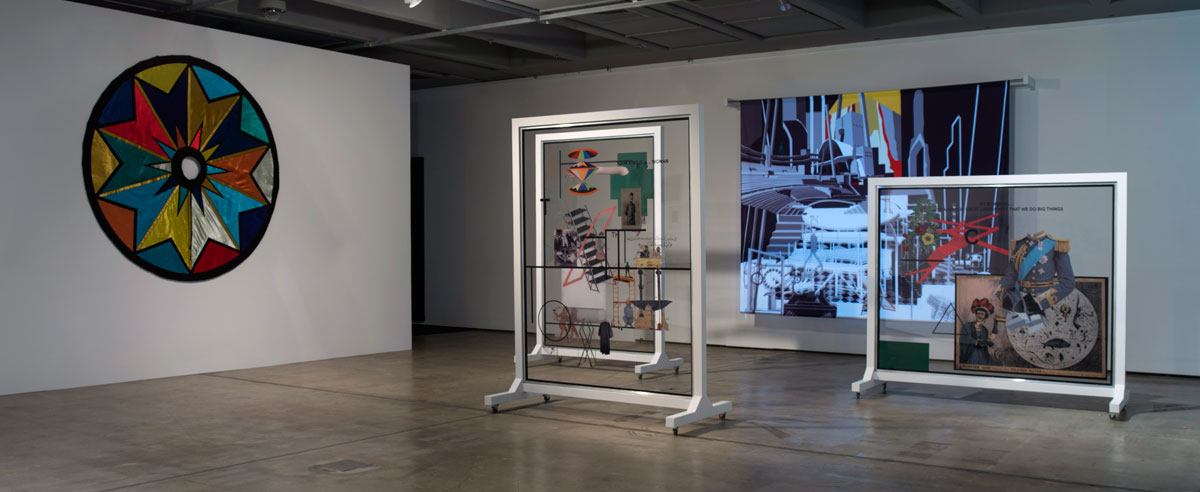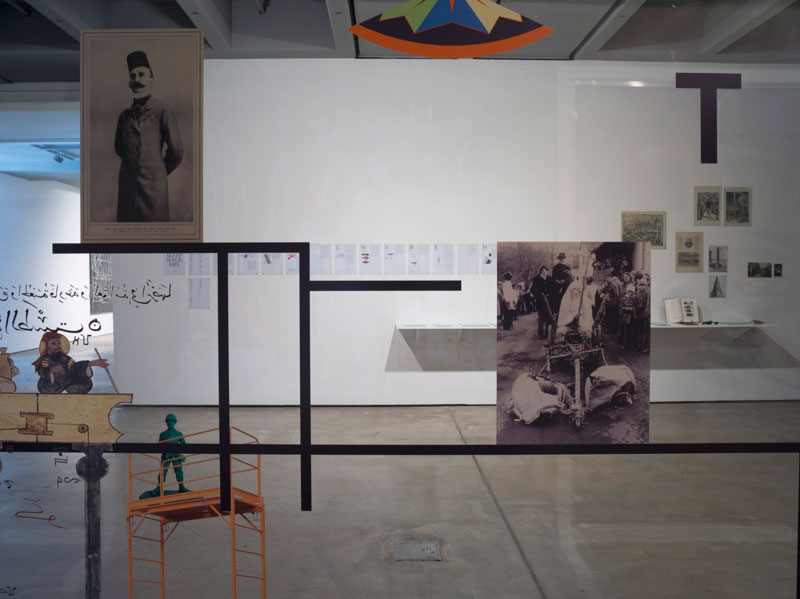
“A for Agricultural Reform / A for Arabism / A for Arm-Apparatus / A for Affect / A for Alexandria / A for Alien” – these are just a smattering of the many topics that are coded and woven into Rana Hamadeh’s exhibition The Sleepwalkers at the Institute of Modern Art, Brisbane. The centrepiece is a large-scale video projection recording a theatrical performance that draws inspiration from Russian constructivist theatre and reacts to political show trials. Elements of the stage sets seen in the video are presented within the adjacent room, alongside text and archival material that is in turn referenced within the script of the performance. Although there is cross-referencing within the different elements of the exhibition closer inspection doesn’t necessarily bring illumination.
The artist noted that it doesn’t matter whether people understand all of the many references because she is trying to make an affective work. But for an exhibition so heavy reliant on references – including the colonial history of Egypt, the plague of Athens in 430 BCE, and Marcel Duchamp’s The Large Glass (1915–23) – is this too easy an out? I have to concur that the most affective scene in the video is the strongest part of the exhibition. It centres on the infamous story of serial killer sisters Raya and Sakina, who in 1921 were the first women to be legally executed in modern Egypt. It was reported that, after all other attempts to extract a confession from them failed, a whirling trickster (not trained as a dervish) was successful at getting them to confess by inducing them into a state of reverie.
.jpg)
The depiction of this moment created through the fast-paced editing, cutting between a spinning skirt and painted lips, and thumping sound track builds into a crescendo that overwhelms the viewer. This trance-like moment cuts off all attempts at scrambling to collect and to make sense of the many untied threads of information. In this moment the audience no longer bears witness to what is happening to the sisters but is induced into the experience of the sisters. Hamadeh proposes that this change of role from bearing witness to experiencing is key to rethinking ideas of justice.
The Sleepwalkers is the latest instalment of the artist’s ongoing Alien Encounters project, which takes Sun Ra’s idea of radical otherness as a provocation. In Space is the Place (1974) Sun Ra proposes that if one’s position has been denied within a system rather than seek to be recognised by it one should deny the need to operate within that system. Since justice is still denied to so many of the world’s population – and Hamadeh specifically refers to the Syrian population in this instance – the artist here attempts to radically rethink ideas of justice by approaching it through theatre.
.jpg)


